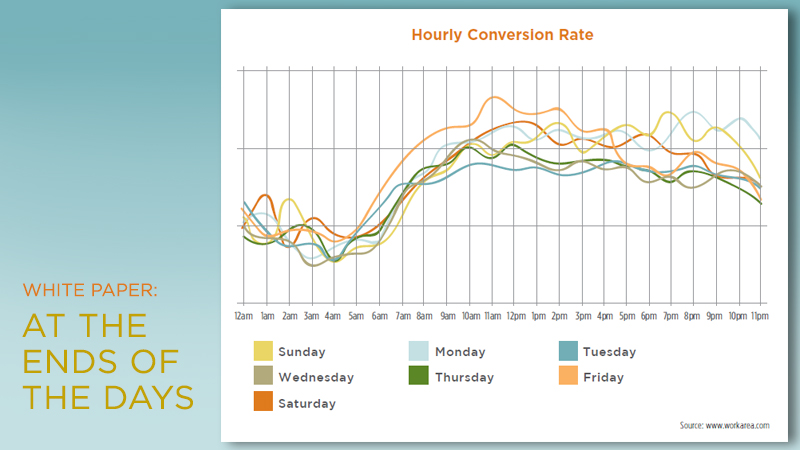Ecommerce enables consumers to shop for what they want when they want. Likewise, streaming video services empower consumers to view what they want when they want. Use patterns of these technologies illustrate that consumers are active on different days of the week and different hours of the day than previously imagined. Patterns suggest a broad set of lifestyles more than they indicate a desire for instant fulfillment.
- Consumers want to shop on Mondays and watch video on Tuesdays
- More shopping is occurring late in the evening and more video viewership is occurring early in the morning
- Three days counts as “now” for today’s consumers
Thank God It’s Monday?
From negligible levels at the turn of the century, ecommerce has now grown to exceed eight percent of all retail sales. Ecommerce sales grew at an 11% rate in 2017, about five times the growth rate of retail on the whole. Cyber Monday, which follows Black Friday, has become a big day on the annual shopping calendar. A concentration of ecommerce sales on Monday, however, is not unique to that day. Distinct from brick-and-mortar shopping, most ecommerce happens on Monday throughout the year. Mondays have the most online sessions and the highest conversion rates for online retailers. Given that Monday is a traditional work day, it appears that ecommerce is more transactional in nature than it is social in nature. Consumers want or need products and they tend to execute those purchases on the first day of the week.
Just as on-demand commerce is a growing trend, on-demand video is capturing consumer attention as well. Networks once scheduled their best shows for prime time Thursday, but consumers have spoken and Tuesday has become the biggest viewing day of the week for streaming video. Jokingly, we suggest that consumers are chilling after Monday shopping.

